Mercedes-Benz E-Class [2021-2024] E 200 Exclusive [2021-2023]
- E-Class [2021-2024]
- Specs & Features
- Variants
- Colours
![Mercedes-Benz E-Class [2021-2024] E 200 Exclusive [2021-2023] Mercedes-Benz E-Class [2021-2024] E 200 Exclusive [2021-2023]](https://imgd.aeplcdn.com/664x374/n/cw/ec/47336/e-class-exterior-right-front-three-quarter-27.jpeg?isig=0&q=80)
![Mercedes-Benz E-Class [2021-2024] Right Front Three Quarter Mercedes-Benz E-Class [2021-2024] Right Front Three Quarter](https://imgd.aeplcdn.com/664x374/n/cw/ec/47336/e-class-exterior-right-front-three-quarter-26.jpeg?q=80)
![Mercedes-Benz E-Class [2021-2024] Right Side View Mercedes-Benz E-Class [2021-2024] Right Side View](https://imgd.aeplcdn.com/664x374/n/cw/ec/47336/e-class-exterior-right-side-view.jpeg?q=80)
![Mercedes-Benz E-Class [2021-2024] Right Rear Three Quarter Mercedes-Benz E-Class [2021-2024] Right Rear Three Quarter](https://imgd.aeplcdn.com/664x374/n/cw/ec/47336/e-class-exterior-right-rear-three-quarter.jpeg?q=80)

![Mercedes-Benz E-Class [2021-2024] Rear View Mercedes-Benz E-Class [2021-2024] Rear View](https://imgd.aeplcdn.com/664x374/n/cw/ec/47336/e-class-exterior-rear-view.jpeg?q=80)
![Mercedes-Benz E-Class [2021-2024] Left Rear Three Quarter Mercedes-Benz E-Class [2021-2024] Left Rear Three Quarter](https://imgd.aeplcdn.com/664x374/n/cw/ec/47336/e-class-exterior-left-rear-three-quarter.jpeg?q=80)
![Mercedes-Benz E-Class [2021-2024] Left Side View Mercedes-Benz E-Class [2021-2024] Left Side View](https://imgd.aeplcdn.com/664x374/n/cw/ec/47336/e-class-exterior-left-side-view.jpeg?q=80)
Variant
Mercedes-Benz E-Class [2021-2024] E 200 Exclusive [2021-2023] Review
Engine and performance

The E-Class that we have reviewed here is the E200 petrol which is powered by a 2.0-litre turbocharged four-cylinder mill producing a 194bhp and 320Nm of torque with power going to the rear wheels via a nine-speed automatic gearbox.

The petrol engine is engaging to drive with a nice powerful punch for quick progress. This quick progress due to the way the 9G-Tronic box shifts giving you optimum punch whenever you need it. There's a minor lag when you mash down but because there’s an ample amount of torque, you can keep the RPMs low and the speeds in three-digits when you need to cover large distances out on the highway. You can even join in the action and control the shifts yourself using the paddle shifters behind the wheel.

Around town and in heavy traffic conditions, the Mercedes 9G-Tronic box is one of the best and usually performs excellently if its left to quietly do its thing in the background. It shifts ratios silently and you never feel the need for wanting more punch for a quick overtake.

Like other cars that make use of this engine, the E200 also gets driving modes; five of them to be precise. They are Eco, Comfort, Sport, sport+ and Individual. Depending on the mode you get sharper responses from the throttle and there are also changes to the way the ESP and traction control respond. Comfort is the best of all modes while Sport+ is useful when you are driving dynamically.

If petrol isn't your thing then there is the entry-level diesel in the E220d which uses a 2.0-litre four-cylinder turbo-diesel that produces 192bhp/400Nm of torque, mated to a nine-speed automatic gearbox. Finally, if you want your E-Class with a bit more punch then Go for the E350d that has been fitted with a six-cylinder diesel producing 282bhp and a whopping 600Nm of torque going to the rear wheels via the nine-speed automatic.
Ride and handling

Now with cars like the E-Class and especially in this LWB guise, comfort is the key and that's something it's particularly good at. You get McPherson struts in front and a multi-link setup at the rear. The highly coveted airmatic air suspension is only available with the top-spec e350d variant.

The low-speed ride is on the firm side and is quite audible for a luxury car well above the Rs 50 lakh mark. This is very evident if you are going over a rough patch or a particularly large speed breaker. However, it settles down quickly and this is quite important especially if you are someone who has got the car to be chauffeured around town. Pick up the speed and the E-Class ride quality improves significantly with that underlying firmness showing its true purpose in giving the car stability at higher speeds.

There's no getting away from the fact that the E-Class in this LWB guise is a long car with a 5.0-metre length and 3.0-metre wheelbase. This coupled with the ultimate goal of luxury means it's not the most dynamic car to drive.

There's a nice weight to the steering and if you plan your moves well in advance, you get rewarded with a good driving experience. As is the case with most cars of this size, you get some great straight-line stability at three-digit speeds and can munch up the kilometres without struggling. The NVH insulation for the most part is quite impressive and even spending long periods both in the front or rear will not be a tiring experience.
Interior Space and Quality

The highlight of the E-Class in the LWB guise is space for the second-row occupants. Over the standard wheelbase car, you get an additional 140mm space within which is very visible in the second row. This means lots of headroom and legroom for both occupants. To offer a rear-seat experience, you can recline the rear seatback or if you are on the left side, even move the front seat for enough room to stretch out and lounge.

The other main highlight of the rear seat is a removable tablet that runs the same MBUX infotainment system as the massive displays in the front. It also serves as a way for the rear seat occupants to control various functions of the car and let the driver focus on the road.

Other features here include two USB Type-C ports, rear AC vents with their climate zone, sun blinds, centre armrest with cup holders, memory function and even a headrest with adjustable side braces for getting yourself into just the right position.

While the highlight of the E-Class is the second row, its first row doesn’t disappoint either. You get this beige upholstery with this black ash wood trim for the centre console, dashboard as well as all the doors. As is the case with most of the modern Mercedes range, the interior is quite sorted in terms of ergonomics with everything accessible or falling easily to hand. Of course, you can’t talk about the front seats of the E-Class and not mention these massive displays. They are dual 12.3-inch full HD units that serve to display the latest MBUX infotainment system on the left and the instrument cluster on right.

The digital instrument cluster is a marriage of classic Mercedes speedo design with the latest in their technology showcase. All functions are controlled via the steering wheel and it even gets three different display modes each matching the colours and fonts of various generations of Mercedes-Benz instrument cluster designs.

The screen on the left is another 12.3-inch touch display running Mercedes-Benz latest MBUX infotainment system with a plethora of connectivity options like Apple CarPlay, Android Auto and even WiFi connectivity if enabled. Like the instrument cluster, the infotainment screen is bright, intuitive to use and can be controlled via the steering, haptic touchpad, voice commands or directly as it is also a touchscreen.

As a part of the 2021 update, the MBUX system gets a mobile app called Mercedes Me which offers functions like pre-cooling or pre-heating the cabin, choosing the ambient lighting colour, emergency call services, music control and even honking the horn in case you are searching for the car in a crowded place. What’s more, if you are a fan of smart devices, the 2021 update for the MBUX system also includes Google Home and Alexa support. This means you can effectively integrate your E-Class into any smart ecosystem of the future.
Features and Safety

Now this being a Mercedes in the thick of their range you get quite a few features on offer depending on the variant. This includes the likes of power door closing function, three-zone climate control, MBUX infotainment system Alexa/Google Home integration, 64 shade ambient lighting, seat memory function for all four seats and Burmester sound system. All versions of the E-Class get seven airbags, pre-safe technology, ISOFIX child seat mounting points, ABS with EBD, traction control and ESP and even auto park assist.
Conclusion, pricing and competition

The E-Class, in this fifth generation, displayed its competency right from the word Go. This mid-life update is, as we have said before, a good boost for the car’s strong offerings and that’s not considering its USP of being an LWB vehicle with the segment-leading rear-seat space. This update puts it right back in the action of the segment once again. The E-Class range is priced from Rs 63.60 lakh to Rs 80.90 lakh (all-India ex-showroom). It rivals the likes of the Audi A6, Jaguar XF, Volvo S90 and BMW 5 Series.
Photography: Kaustubh Gandhi
Specifications & Features
- Specifications
- Features
- Specifications
- Features
Specifications
Engine & Transmission
Top Speed240 kmphAcceleration (0-100 kmph)7.6 secondsEngine1991 cc, 4 Cylinders Inline, 4 Valves/Cylinder, DOHCEngine TypeM274 Turbo I4Fuel TypePetrolMax Power (bhp@rpm)194 bhp @ 5500-6100 rpmMax Torque (Nm@rpm)320 Nm @ 1650-4000 rpmDrivetrainRWDTransmissionAutomatic (TC) - 9 Gears, Paddle Shift, Sport ModeEmission StandardBS 6Turbocharger / SuperchargerTurbochargedOthersIdle Start/StopValve/Cylinder (Configuration)4, DOHCDimensions & Weight
Length5075 mmWidth1860 mmHeight1495 mmWheelbase3079 mmCapacity
Doors4 DoorsSeating Capacity5 PersonNo of Rows2 RowsBootspace540 litresFuel Tank Capacity80 litresSuspensions, Brakes, Steering & Tyres
Front SuspensionFour-Link, Air Springs, Twin-Tube Gas-filled Shock Absorbers with Adaptive DampingRear SuspensionMulti-Link, Air Springs, Twin-Tube Gas-filled Shock Absorbers with Adaptive DampingFront Brake TypeVentilated DiscRear Brake TypeVentilated DiscMinimum Turning Radius5.3 metresSteering TypePower assisted (Electric)WheelsAlloy WheelsSpare WheelSpace SaverFront Tyres225 / 55 R17Rear Tyres225 / 55 R17
Features
Exterior
Sunroof / MoonroofElectrically AdjustableRoof RailsNoRoof-mounted AntennaNoBody-coloured BumpersYesChrome Finish Exhaust PipeYesBody KitNoRub-stripsNoBraking & Traction
Anti-Lock Braking System (ABS)YesElectronic Brake-force Distribution (EBD)YesBrake Assist (BA)YesElectronic Stability Program (ESP)YesFour-Wheel-DriveNoHill Hold ControlYesTraction Control System (TC/TCS)YesRide Height AdjustmentYesHill Descent ControlNoLimited Slip Differential (LSD)NoDifferential LockNoSafety
Overspeed Warning1 beep over 80kmph, Continuous beeps over 120kmphLane Departure WarningNoEmergency Brake Light FlashingYesPuncture Repair KitNoForward Collision Warning (FCW)YesAutomatic Emergency Braking (AEB)YesHigh-beam AssistYesNCAP Rating5 Star (Euro NCAP)Blind Spot DetectionYesRear Cross-traffic AssistNoAirbags7 Airbags (Driver, Passenger, 2 Curtain, Driver Knee, Driver Side, Front Passenger Side)Rear Middle Three Point seatbeltYesRear Middle Head RestYesTyre Pressure Monitoring System (TPMS)YesChild Seat Anchor PointsYesSeat Belt WarningYesComfort & Convenience
Air PurifierNoHeated/Cooled Cup Holders-Electronic Parking BrakeAuto HoldAir ConditionerYes (Automatic Three Zone)Front ACTwo Zones, Individual Fan Speed ControlsRear ACSeparate Zone, Vents Behind Front Armrest, Common Fan Speed ControlThird Row AC Zone-HeaterYesVanity Mirrors on Sun VisorsDriver & Co-DriverCabin Boot AccessYesAnti-glare MirrorsElectronic - Internal OnlyParking AssistReverse Camera with GuidanceCruise ControlYesHeadlight and Ignition On ReminderYesKeyless Start/ Button StartYesSteering AdjustmentElectric Tilt & Telescopic12V Power OutletsYesLighting
Ambient Interior Count64HeadlightsLEDAutomatic HeadlampsYesFollow Me Home HeadlampsYesCornering HeadlightsActiveTaillightsLEDDaytime Running LightsLEDFog LightsLEDAmbient Interior LightingMulti-colourPuddle LampsYesCabin LampsFront and RearLight on Vanity MirrorsDriver & Co-DriverRear Reading LampYesGlovebox LampYesHeadlight Height AdjusterYesLocks & Security
Engine ImmobiliserYesCentral LockingKeylessSpeed Sensing Door LockYesChild Safety LockYesDoors, Windows, Mirrors & Wipers
ORVM ColourBody ColouredScuff PlatesIlluminatedSoft-close DoorYesPower WindowsFront & RearOne Touch DownAllOne Touch UpAllAdjustable ORVMsElectrically Adjustable & RetractableTurn Indicators on ORVMsYesRear DefoggerYesRear WiperNoExterior Door HandlesBody ColouredRain-sensing WipersYesInterior Door HandlesChromeDoor PocketsFront & RearSide Window BlindsRear - ElectricBootlid OpenerElectric Tailgate ReleaseRear Windshield BlindElectricEntertainment, Information & Communication
Android AutoYesApple CarPlayYesDisplayTouch-screen DisplayTouchscreen Size12.3 inchGesture ControlYesDisplay Screen for Rear PassengersNoIntegrated (in-dash) Music SystemYesSpeakers6+Steering-mounted controlsYesVoice CommandYesGPS Navigation SystemYesBluetooth CompatibilityPhone & Audio StreamingAUX CompatibilityYesAM/FM RadioYesUSB CompatibilityYesWireless ChargerNoHead Unit SizeNot ApplicableiPod CompatibilityYesInternal Hard DriveYesDVD PlaybackNoMobile App Features
Find My CarYesCheck Vehicle Status via AppYesGeo-fenceYesEmergency CallYesOver The Air (OTA) UpdatesYesRemote AC: On / Off via AppNoRemote Car Lock/Unlock via AppYesRemote Sunroof: Open / Close via AppYesCar Light Flashing & Honking via AppYesAlexa CompatibilityYesRemote Parking with KeyNoStorage
Cup HoldersFront & RearDriver Armrest StorageYesCooled GloveboxNoSunglass HolderYesAirbags
Airbags7Seats & Upholstery
Massage SeatsNoDriver Seat Adjustment16 way electrically adjustable with 3 memory presets (seat forward / back, backrest tilt forward / back, headrest up / down, seat height up / down, lumbar up / down, lumbar forward / back, seat base angle up / down, extended thigh support forward / back)Front Passenger Seat Adjustment16 way electrically adjustable with 3 memory presets (seat forward / back, backrest tilt forward / back, headrest up / down, seat height up / down, lumbar up / down, lumbar forward / back, seat base angle up / down, extended thigh support forward / back)Rear Row Seat Adjustment6 way electrically adjustable with 3 memory presets (backrest tilt forward / back, headrest up / down, seat base angle up / down)Seat UpholsteryLeatherLeather-wrapped Steering WheelYesLeather-wrapped Gear KnobNoDriver ArmrestYesRear Passenger Seat TypeBenchThird Row Seat TypeNoVentilated SeatsNoVentilated Seat TypeNoInteriorsDual ToneInterior ColoursBlack , Beige with brown / Open-pore light brown ash wood trimRear ArmrestWith Audio controls & Cup holderFolding Rear SeatFullSplit Rear Seat40:20:40 splitFront Seatback PocketsYesHeadrestsFront & RearInstrumentation
Instantaneous ConsumptionYesInstrument ClusterDigitalTrip MeterElectronic 2 TripsAverage Fuel ConsumptionYesAverage SpeedYesDistance to EmptyYesClockDigitalLow Fuel Level WarningYesDoor Ajar WarningYesAdjustable Cluster BrightnessYesGear IndicatorYesShift IndicatorDynamicHeads Up Display (HUD)NoTachometerDigitalManufacturer Warranty
Battery Warranty (In Years)Not ApplicableBattery Warranty (In Kilometres)Not ApplicableWarranty (In Years)3Warranty (In Kilometres)Unlimited
Other E-Class [2021-2024] Variants
| Variants | Price | Specifications | |
|---|---|---|---|
Rs. 74.95 Lakh | 5 Person, RWD, 320 Nm, 540 litres, 9 Gears, M274 Turbo I4, Electrically Adjustable, 80 litres, No, No, Front & Rear, 7.6 seconds, 240 kmph, 5 Star (Euro NCAP), 5075 mm, 1860 mm, 1495 mm, 3079 mm, 320 Nm @ 1650-4000 rpm, 194 bhp @ 5500-6100 rpm, Keyless, Yes (Automatic Three Zone), Front & Rear, 1, Reverse Camera with Guidance, Yes, Yes, 1, Yes, Yes, No, 7 Airbags (Driver, Passenger, 2 Curtain, Driver Knee, Driver Side, Front Passenger Side), Yes, 1, BS 6, 4 Doors, Petrol, Automatic (TC), 194 bhp | Get Offers from Dealers |
Similar Cars

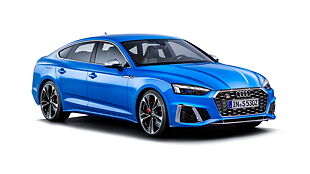
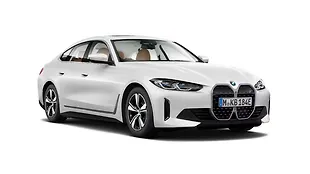
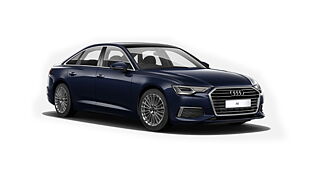
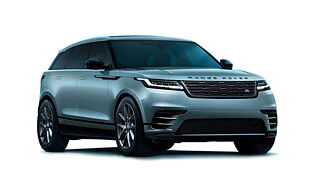
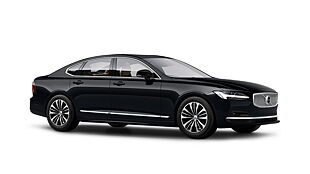
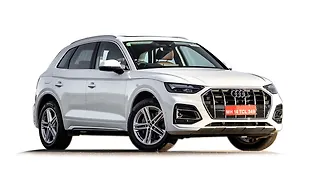
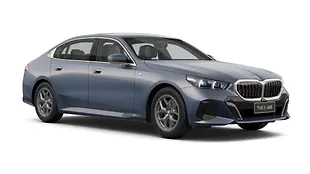
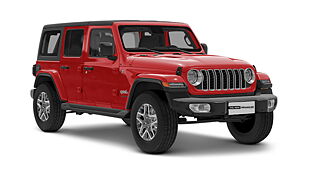
Explore Used Mercedes-Benz E-Class
Colors
- Home
- Mercedes-Benz Cars
- E-Class [2021-2024]
- E 200 Exclusive [2021-2023]

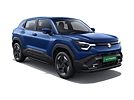
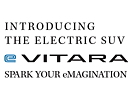

![Second hand Mercedes-Benz E-Class E 200 Exclusive [2019-2019] Second hand Mercedes-Benz E-Class E 200 Exclusive [2019-2019]](https://imgd.aeplcdn.com/310x174/vimages/202501/3781804_110418_1_1736240373483.jpg?q=80)


![Second hand Mercedes-Benz E-Class E 200 Exclusive [2019-2019] Second hand Mercedes-Benz E-Class E 200 Exclusive [2019-2019]](https://imgd.aeplcdn.com/310x174/cw/ucp/stockApiImg/9LZHR0P_n5ul131t_1_50002542.jpg?q=80)




